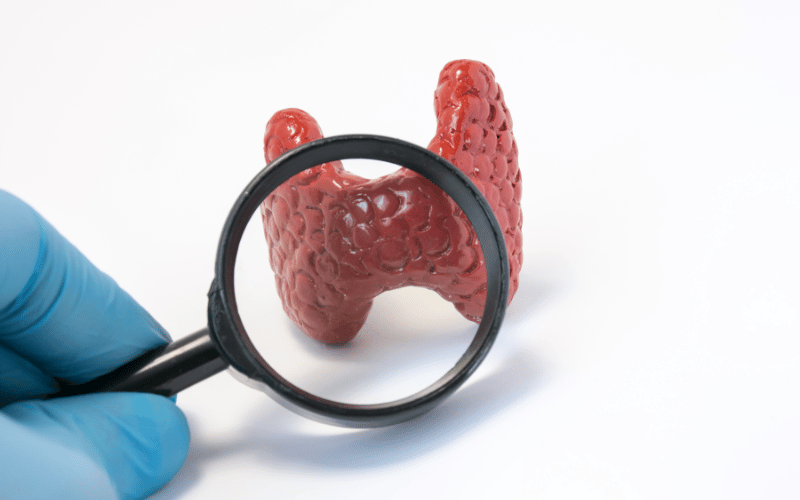Stage 2: The Late Stage of Graves’ Disease – Unfolding the Complexities

As Graves’ disease transitions from the initial to the late stage, the symptoms become more severe and the health implications more profound. The disease’s progress can affect the eyes and skin, leading to conditions known as Graves’ ophthalmopathy and dermopathy, respectively.
Graves’ ophthalmopathy is an eye condition that can lead to red, swollen eyes, double vision, and even vision loss. It’s a distressing development that occurs when the immune system attacks the muscles and other tissues around the eyes. The inflammation and swelling can cause the eyes to protrude or appear bulgy, a condition known as exophthalmos. It’s not just a cosmetic concern – it can lead to serious eye problems, including double vision and vision loss.
In addition to the eye symptoms, patients may develop Graves’ dermopathy. This skin condition is characterized by thick, red skin that usually appears on the shins and tops of the feet. This thickening and reddening of the skin, also known as pretibial myxedema, is caused by an abnormal accumulation of substances called mucopolysaccharides in the skin. It’s generally painless but can be itchy and disfiguring.
Another complication that can arise in the late stage of Graves’ disease is thyroid storm. This severe, life-threatening condition occurs when the hyperthyroid symptoms become extreme, often as a result of stress or illness. It requires immediate medical attention and is characterized by a high fever, delirium, extreme tachycardia, and even heart failure.(2)